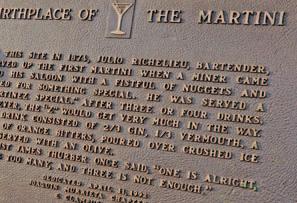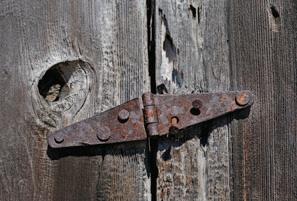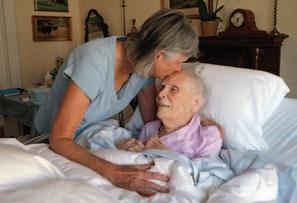
1 minute read
TheMartinezSpecial
ships. Buttheyhad a flag, admirals, certificates. Richard Nixon was an admiral. This was a wayfor politiciansto laugh and enjoy stories about the martini and also to focus onthe need foranew bridge acrossthe Carquinez Strait.It was asocialclub.But it was serious.”
Greertysaysthe MartiniNavy occasionally would setsail for Sacramento bearing “copious amounts of gin and vermouth” to lobby for the span.
Morerecently,it issaid that importantcourts-related business was conductedatAmato’sRestaurant, whichalsowas located at 414 FerrySt.,withthe aid ofthe cocktail’ssoothinginfluence.
Thebiggest challengetowhat Martinez residents consider their rightful heritage came from San Francisco andwas fueledby Chronicle columnist and martini enthusiastHerbCaen. In1983,the San FranciscoCourtof Historical Reviewheld a mock trial, which ruled that thedrink originatedin the city.

Shortly thereafter,aMartinez mock court, setting up shopin the CityCouncilchamber,overturned the San Franciscoruling. Colorful local attorney BillGlassrepresented Martinez.
“Bill was particularly persuasive,”Costanza says.“He called on the ghostof Julio Richelieu. He established the casethrough Julio himself.Needless tosay,Martinez won thetrial.”
Asin the SanFrancisco proceeding,martinis wereserved.
“I know the judgedid drink one … or more,” saysRuss Yarrow, who coveredthe event forthe Contra Costa Times.
Caen was unmoved.
“Thepreposterous talethat the birth of the martinihad something to do with Martinez,” he wrote, “livesonlikeastrong hangover.”
Bartender Eugene Atkinson makes a martini at Nu-Rays bar in Martinez. RebuffingSan Francisco’sclaim to thecocktail, seen at right, Martinezcites agoldminer as the first to tastea MartinezSpecial —apotent blend of gin,vermouth, adash of bitters andanolive.In someversions of the tale, the drink was made at the corner of Alhambra Avenueand Masonic Street, where a plaque, at bottom left, identifies the site as “Birthplace of the Martini.” Other storiescite 414 Ferry St., where the Royal Thai restaurant, at bottom right, now stands.


CharlesMartin’snamehas all but vanished among thepastoral, straw-colored valleys of WestMarin. Butthe man who emigratedfrom aforsaken Swiss village in the 1850sas a teenager hasleftalasting legacy. Squint hardenoughasgolden rays slice throughheavenlyChileno Valley onanautumn morning, and it’spossibletoimaginetheghost of Martin (neeCarloMartinoia) roaming thelandscape likea prowlingcougar.
Marin County was a primary destinationfor Martin and other Swiss-Italian immigrants from thesmall cantonof Ticino, where about 27,000 fled Europefor Australia, South Americaand, eventually, California.These Swiss forebears havepassed downto their offspring afarming tradition thatflourishestoday with big-cityappetites fororganicand farm-to-table food. The Bay Area’s agriculturalheartpulsates through this landofPacificbreezes and cottony puffsofmorningfogthat still is workedby the familiesthat originatedfromthe craggyAlpine valleys of southern Switzerland.
AsaPeaceCorpsvolunteer in herearly 20s,SallyGale had romanticnotions about taking her own placeamongthose faraway blond hills whereher multitude of cousinsworkedthe land.
“Youwouldgoover ahill, and they wereeverywhere,” saysGale, afifth-generation Martin. “I was fascinatedbythem.”
In1993, Gale returnedto the ranch ofher great-great grandfather,who had Anglicizedhis name as CharlesMartin. The Martin name has disappeared fromthese partsbecausethe men inthe line eventually didn’tpass italong. Instead, names suchasDolcini and Lafranchi have enduredthrough themarriage of Martin women.

Gale, 73,and husband Mike











